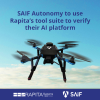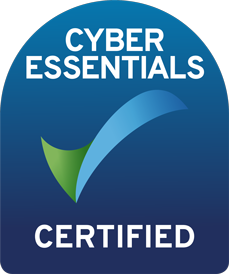
On the 22nd of April, Rapita teamed up with DDC-I, who produce the popular Deos RTOS, to deliver the "Out of the box solution for multicore analysis" webinar. The webinar showcased a brand new simplified integration and also how RapiDaemons can be used for multicore analysis.
A primary challenge designers of modern avionics systems face today is how to implement an efficient means of verifying multicore systems. Specifically, one of the more daunting multicore development tasks is to quantify and optimize an application’s worst-case execution times – especially in the context of multicore interference caused by applications running on other cores that share common resources (e.g. cache, memory, etc.). Up to now, most avionics companies have had to develop or integrate their own tooling for this capability.
Download the full recording here.
This webinar addresses this critical but basic multicore system need. Rapita Systems, developer of software tools for on-target verification, optimization and code coverage analysis of critical real-time embedded systems, and DDC-I, supplier of DO-178 certifiable software and tools for safety critical avionics software developers, partner to offer an ‘out-of-the-box’ integration combining DDC-I’s Deos (time and space partitioned RTOS) with Rapita’s RapiTime (on-target timing) and RapiTask (scheduling visualization and analysis). This not only works on traditional single-core deployments but also for multicore systems running Deos.
DDC-I has been refining Deos’s DAL-A multicore strategy and features for well over a decade, developing an RTOS that effectively addresses the objectives of CAST-32A. Deos’s use of advanced technologies – such as cache partitioning – enables greater performance to be harnessed in the multicore system, whilst also maintaining re-use and functional capabilities.

Rapita has worked closely with DDC-I to develop this seamless, hardware-agnostic integration of RVS with Deos, which is portable to every architecture supported by Deos (PowerPC, ARM, and x86). In this approach, tracing is accomplished by applying RVS instrumentation with a trace mechanism available within the Deos kernel. Further, RapiDaemons (interference generators) provide the means to simulate applications running on other cores and imposing upon shared resources. Together, all of these capabilities enable the integrator to qualify Deos-based multicore systems and determine how to best arrange multicore applications for optimal systems performance.

 Rapita System Announces New Distribution Partnership with COONTEC
Rapita System Announces New Distribution Partnership with COONTEC
 Rapita partners with Asterios Technologies to deliver solutions in multicore certification
Rapita partners with Asterios Technologies to deliver solutions in multicore certification
 SAIF Autonomy to use RVS to verify their groundbreaking AI platform
SAIF Autonomy to use RVS to verify their groundbreaking AI platform
 RVS gets a new timing analysis engine
RVS gets a new timing analysis engine
 How to measure stack usage through stack painting with RapiTest
How to measure stack usage through stack painting with RapiTest
 What does AMACC Rev B mean for multicore certification?
What does AMACC Rev B mean for multicore certification?
 How emulation can reduce avionics verification costs: Sim68020
How emulation can reduce avionics verification costs: Sim68020
 How to achieve multicore DO-178C certification with Rapita Systems
How to achieve multicore DO-178C certification with Rapita Systems
 How to achieve DO-178C certification with Rapita Systems
How to achieve DO-178C certification with Rapita Systems
 Certifying Unmanned Aircraft Systems
Certifying Unmanned Aircraft Systems
 DO-278A Guidance: Introduction to RTCA DO-278 approval
DO-278A Guidance: Introduction to RTCA DO-278 approval
 Avionics Certification Q&A: CERT TALK (with Consunova and Visure)
Avionics Certification Q&A: CERT TALK (with Consunova and Visure)












